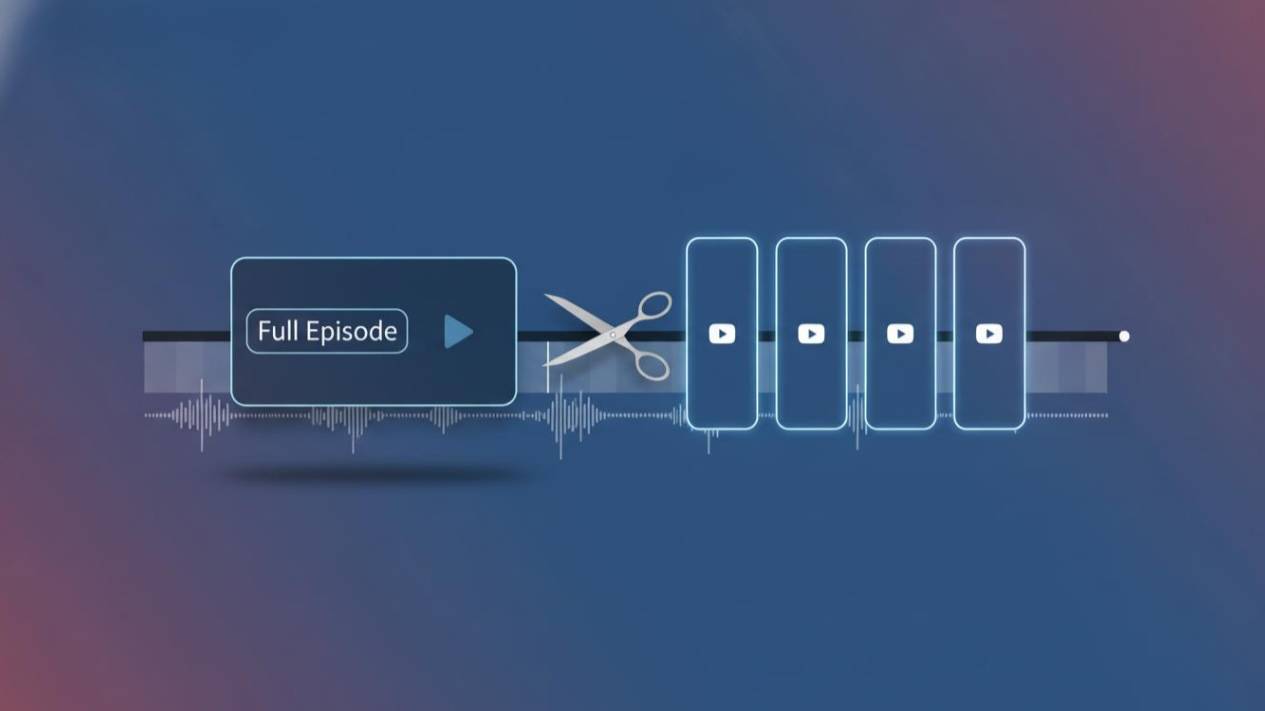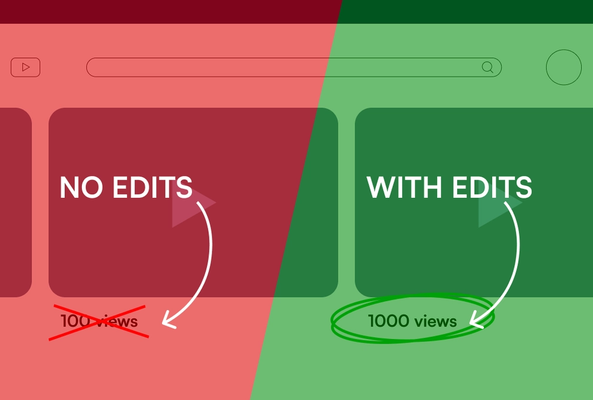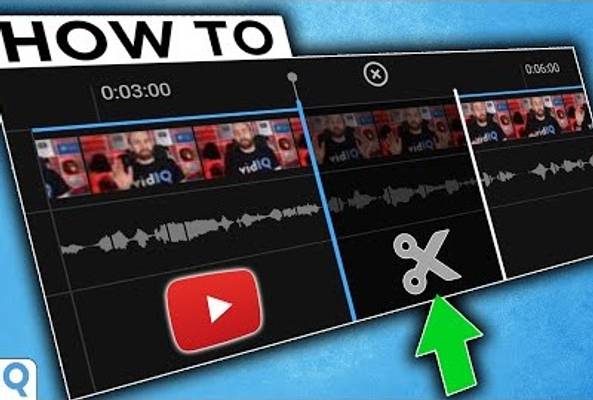Darryl is a writer with years of experience in online video software, combining technical expertise with a passion for educating audiences. When not writing, he’s tending to his farm surrounded by horses, chickens, dogs, and somehow cramming more plants into his garden than it could ever reasonably hold.
How to Promote Your Podcast Using YouTube Shorts
Q&A with Travis, Host of the vidIQ Podcasts Channel
If you’re running a podcast on YouTube, your biggest challenge isn’t recording, it’s discovery.
Most people don’t stumble upon a 45-minute episode of an unknown podcast in their feed. They find you through short, interesting clips that pull them into the full conversation.
To see how this works in practice, we sat down with Travis McPherson, host of the vidIQ Podcasts channel, to talk about how he turns long-form interviews into high-impact YouTube Shorts, and how creators can do the same using a YouTube Clipping Tool.

Q: What is the vidIQ Podcast About?
The vidIQ Podcast is a weekly show where we dive deep into YouTube growth, strategy, and creator success stories. We feature conversations with creators, strategists, and industry experts to uncover what really drives sustainable audience growth.
Each episode runs 20–45 minutes, covering topics like algorithm insights, monetization, creator mindset, and the latest YouTube updates. You can catch it on YouTube or any major podcast platform, plus the occasional highlight clip for quick takeaways.
Q: Why are YouTube Shorts so Useful for Podcasts?
Shorts are powerful for podcasts because they act as high-impact entry points - quick, visually engaging moments that hook viewers and lead them to the full conversation.
Most podcast discovery happens through clips, not full episodes. Shorts let you highlight the most shareable 15–60 seconds, the punchline, the aha moment, or the emotional spark, and serve it to audiences who’d never scroll for an hour-long talk.
That’s why vidIQ uses Shorts as a promotional engine, not just filler content. If you’re learning how to create YouTube Shorts from long videos, this approach is a blueprint worth following.

Q: How do you Choose Clip-Worthy Moments?
When we’re producing an episode, we’re always thinking about clipability—those moments that stop a scroll and spark curiosity. Essentially, we’re asking: Would this moment make someone stop scrolling and think, “Wait… I need to hear more of that”? If yes, that’s a Shorts candidate.
We also use a clip farming approach, where we identify multiple potential hooks within a single video and test which ones perform best as Shorts. This helps us refine our storytelling and understand what moments truly resonate with the audience.
We pull 6 Shorts per episode so that we can have a week’s worth of content per episode. And we do approach interviews differently than monologue-style. For interviews, the magic is in the interaction, we focus on energy, pacing, and those unscripted exchanges that reveal something unexpected. For monologue-style episodes, it’s all about structure and momentum. In short: interviews are about capturing moments, while monologues are about crafting them.
Q: What is Your Workflow and What Tools Do You Use?
I use AI for different things such as clipping, scripting, research and thumbnail ideation. AI can help make a process that may take days ordinarily, finish in a matter of minutes.
And of course I use vidIQ’s YouTube clipper. Especially, when time is of the essence and you don’t have an idea of great moments or time to edit shorts, the clipping tool is so clutch. You can literally put the link to the video into the clipping tool and go work on something else. Then in under 30 mins, you have tons of shorts you can either use directly or be inspired by to create yourself.
Our shorts are posted 6 days a week but aren’t necessarily in any order. Since shorts appear on people’s feeds at different times, there is no reason to put them in an order as they are rarely seen in that way anyway.
One thing creators should keep in mind, I always advocate for creating separate versions for each platform, however, if you notice a short form piece of content is working well on one platform, there aren’t a lot of reasons to not just upload that same piece of content to the other platforms you are on.

Q: How Should Creators Cut YouTube Videos into Engaging Shorts?
I often get asked, ‘What length tends to perform best for podcast clips?’ and the answer is, whatever length gets the point across. The problem most creators have is they look for a magical number when none exist. If the story is interesting for 30 seconds then the short should be around that length. But trying to extend or shorten content for an arbitrary number isn’t a good thing.
To have good composition for multi-person shows, always ensure that each person stays as close to the center of their camera as possible. This makes editing them much easier later on. If you have to continually move a clip around it could cause some issues when you go from one scene to another.
And make sure to add captions. Captions are expected by most viewers in short form so it’s a good idea to utilize them whenever possible. One of the reasons for this is when people have the volume down or are hearing impaired. Meeting people where they are is super important to all forms of creation.
Q: How Do You Optimize Podcasts for Discovery
This is no different than long form. What should someone expect from the video and how do you create intrigue to watch? It can be something as simple as “5 ways to improve your life in 30 mins” or “I can’t believe what I was able to buy for $5!”
Don’t get hung up on hashtags either. In general on YouTube, hashtags play a minimal role in discoverability. Think of these as text based versions of emojis. Don’t put any additional time into using them for searchability purposes.
And make sure to link back to the original video. You can use the YouTube Studio option when uploading your short to link back to the full episode.
Q: What Topics or Moments Perform Best as Shorts?
Whenever there is a moment that is very interesting that doesn’t directly fit into the thumbnail or title of the full episode, this is a PERFECT opportunity to use shorts. These clips can get people to be interested in checking out the full episode that they may have not otherwise watched/listened to.
“Shorts aren’t just highlights—they’re hooks. They give new viewers a reason to care about the full conversation.”
Try vidIQ’s YouTube Clipping Tool and turn your next podcast episode into a week’s worth of YouTube Shorts.
FAQs
What’s the best YouTube Clipping Tool for podcasters?
The best tool depends on your workflow, but vidIQ’s YouTube Clipping Tool stands out for speed and AI-powered automation. It helps you quickly identify highlight moments and automatically generate Shorts-ready clips from full episodes.
How can I create YouTube Shorts from long videos?
To create YouTube Shorts from long videos, start by identifying key 15–60 second highlights that deliver strong emotion or insight. Use a YouTube Clipper like vidIQ’s tool to trim, reframe to vertical, and export in 9:16 format. Add captions, a hook in the first two seconds, and upload directly to your channel.
Is it better to manually cut YouTube videos or use AI tools?
AI tools like vidIQ’s AI Shorts Generator can save hours by detecting engaging moments automatically. Manual editing still gives you full creative control, but AI-assisted clipping is ideal when you’re short on time or producing content in bulk.
What’s the ideal length for YouTube Shorts made from podcasts?
There’s no single perfect length, the key is to cut YouTube videos so each clip delivers one complete, satisfying idea. Most high-performing Shorts fall between 20 and 45 seconds, long enough to deliver context but short enough to keep retention high.
How many Shorts should I post from one podcast episode?
A good baseline is five to six Shorts per episode, giving you nearly a week of content. Each clip should spotlight a unique takeaway or moment. Consistency matters more than perfection, regular uploads train YouTube’s algorithm to surface your content more often.






